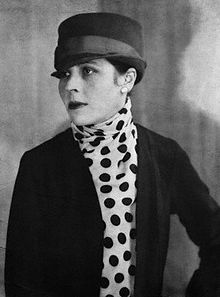Dave Chappelle, in his Netflix’s specials “Equanimity” and “The Bird Revelation,” tackles the issue of political correctness in comedy head on. He says just because something is a little offensive, doesn’t mean it can’t be funny. He uses comedy as an effective tool to address many hot topic, political issues of the day. From Donald Trump to the “Me Too” movement, Chappelle uses comedic stories as a method of sharing his views and stances on certain issues. His jokes often lead to an immediate laughter followed by a brief pause as you fully come to digest the actual statement he just made.
With diversity and political disagreements being placed increasingly on the forefront of the news cycle, this model has become almost standard for comedians. They are looking to share their messages and experiences as much as they are trying to make someone laugh.
Especially in a day in age where powerful blacks are called out for speaking their minds on political issues, comedy offers a safe avenue for people of color to speak their minds. Black comedians are able to talk about these issues because they do it in a “joking” manner, but predominant athletes, like LeBron James, are told to stay out of the issues and stick to sports. However, it does not make Chappelle’s messages any less meaningful because he discusses his views in a “joking” manner. Nevertheless, while these comedians are able to speak their mind through comedy, they still must seek the favor of whites often by saying their white fans are not the ones at fault.
Much like Dave Chappelle, Chris Rock follows a similar model in his Netflix special, “Tamborine.” He attacks many issues of race and politics while often being aggressive with his beliefs. Yet throughout, he seeks the approval of his white audience and is given a free pass to speak his mind because what he says is funny.
In particular, Chris Rock begins the show by bringing up the hot topic, racial issue of police brutality. He calls out the sheer number of blacks being killed by the police and jokingly comments that surely the police must think about killing a white man every now and then to even out the numbers. He’s conflicted in his opinion of the police as he’s a black male and therefore, should hate the police. But, at the same time, he owns property and values their protection. He lightens this conflict by joking about gang members acting as his protection when his house is robbed. His ability to bring up an issue and later, play off that issue in a joking manner allows his message to appeal to all audiences. He is even able to appeal to cops by pointing out the extreme difficulty in their job and states that he believes they should be paid more. However, while doing so, he takes another jab by saying we’re getting what we’re paying for. After this plea to all audiences, he finishes the bit on a serious note stating that often the outcome of these events are certain cops being blamed and not the system itself. He cleverly plays of the “bad apple” phrase using pilots stating that in certain jobs, everyone must be perfect as a bad apple means a plane crashing into a mountain.
Maybe his most relevant comments from this bit come from his lines about his “celebrity status” with the cops. From a distance, he’s just any old black man to a cop until they see his face and become instant fans. This joke is a great representation for why comedians get a pass for speaking their minds. From a distance, he represents a threat, but up close, he is a hilarious comedic. His comedy, alongside his plea to his white audience like his statements about cops’ salaries, are his pass to discuss these issues freely.
This pattern continues throughout the show with other issues including guns, the realities of life for different races, and Trump. Mr. Rock, as he asks to be addressed by kids within the special, uses his comedy as a way to speak his mind on political issues. Despite his fame, he seeks to appeal to all audiences often having to cover his bases after making some progressive comments. This combination is the standard model for comedians addressing racial or political issues and because of its comedic value, is often very effective.






